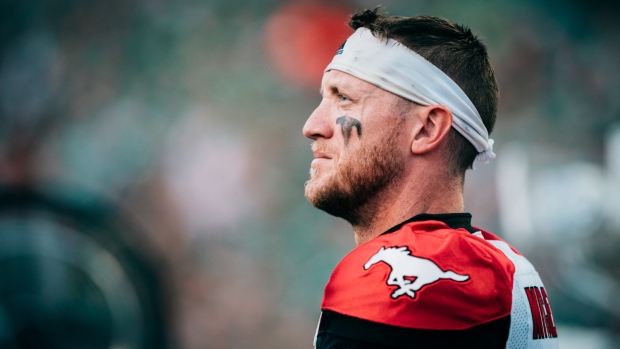Aug 11, 2020
Where things stand with a 2020 CFL season
Confused about why the Canadian Football League is still ruminating on playing a shortened season as we move into mid-August? You’re not alone. And yet, even after months of drama between the league and its players association, deadlines that came and went, plus a few go-arounds with the federal government, there remains hope. TSN's Dave Naylor has more.
By Dave Naylor

Confused about why the Canadian Football League is still ruminating on playing a shortened season as we move into mid-August? You’re not alone. And yet, even after months of drama between the league and its players association, deadlines that came and went, plus a few go-arounds with the federal government, there remains hope.
Consider the answers to the following seven questions as your guide to understanding where things stand with a 2020 CFL season and where this may go from here.
1. Why is the CFL still holding out hope for a shortened season?
The simple answer is that it still hasn’t received a “no” to its request for financial aid from the federal government. The request began as a bailout in the spring and was amended to a loan request by summer. And here we wait. The CFL must believe there’s a chance its request for a $30-million interest-free loan will come to fruition, otherwise it would have called the season off by now. (It also required approval from Health Canada for its proposed Winnipeg bubble). The league has to hope that the federal government isn’t simply trying to run out the clock here because time is running short.
2. Other leagues are playing without support from the federal government. Why does the CFL need it to play?
The short answer is that other leagues take in a larger share of their revenues from broadcast deals, so it’s easier to make the economics work without fans in the stands. In the cases of the NBA and NHL, most of the player salaries have been paid for the season and the playoffs are mostly about revenue for the owners. The CFL’s six private owners could afford to fund the league without a loan but the belief is they won’t opt to do so.
3. If the government comes through with the loan, does that mean it’s game on?
Not necessarily. The league needs to finalize a revamped CBA with its players, which hasn’t been completed yet. There is still at least one potentially sticky issue on the table: whether or not the players’ salaries will be guaranteed for this season in the event it can't be completed. An agreement would also have to be ratified by the players, which could take as long as a week. Assuming that happens, there would then be the massive logistical operation of teams getting their staffs and players to Winnipeg to enter the bubble in time to begin training camp.
4. When would a season start?
Based on where the calendar sits right now, it’s believed a six-game regular season couldn’t begin before late September. That would mean getting players into the bubble early in the month for a seven-day quarantine and 10-day training camp before beginning a season and playoffs that would likely wrap up in late November.
5. Is there any sense of how many CFL players will choose not to play?
That’s a matter of debate. Back in early July, most agents were saying 75-to-80 per cent of their players were planning to play. But that number may have slipped as more players have pursued regular jobs. For some, playing for a pro-rated one-third of their salaries will be worth it; for others it will not. One team told me this week they expected to have five starters (three Canadian, two American) opt out. The bottom line is the opt-outs won’t be evenly distributed across the league, which could affect competitive balance on the field when/if this all begins.
6. With so many players coming from hotspots in the U.S., how can the CFL make sure this is all safe?
The league has laid out a protocol that requires players in the U.S. to self-isolate for 14 days and get a COVID-19 test before coming to Winnipeg. At that point they would be tested several more times during seven more days of isolation within the Winnipeg bubble. Understandably, many — okay, more than many — around the league are skeptical about players in the U.S. adhering to the 14-day quarantine before coming to Winnipeg.
7. What happens if the CFL doesn’t get financial assistance from the federal government or can’t get a CBA completed and ratified by its players?
Then there won’t be a season, and the league would immediately turn its attention to 2021. Sources insist the economics are better for the CFL by playing this season as opposed to cancelling, although with a $30-million loan to repay and no revenue from fans in the stands, teams will be digging out from a financial hole under any scenario.

